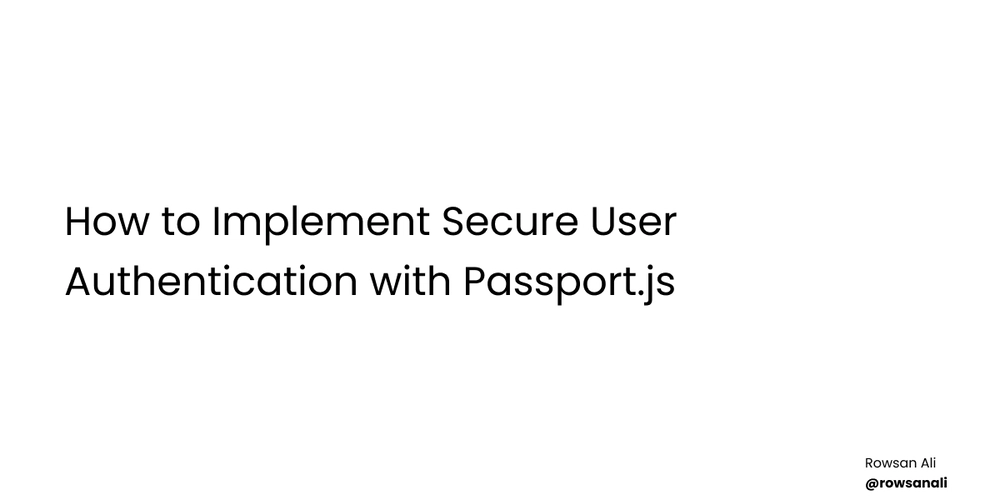The Danger of Assumptions in Client Communication
At one point, my team was juggling three critical projects simultaneously, and dropping the ball on any of them was not an option. We successfully released the first project while also addressing additional Roku certification requirements for the other two. After the initial release, we shifted our focus to the remaining projects. However, as luck would have it, the newly released app began experiencing user authentication issues. Initial Issue and Speculation One evening, I received a call to join the war room. Our CTO informed me that the client was encountering problems, with most reports coming from Roku, FireTV, and tvOS platforms. He briefly explained how to reproduce the issue on FireTV, and the technical managers immediately began speculating about the cause, especially since these platforms did not share a common codebase. However, they did share the same UI/UX and backend. Struggling to Replicate the Issue The next day, I began troubleshooting but quickly realized that I couldn’t replicate the issue, no matter what I tried. I tested on various devices, OS versions, and even during the client’s peak usage times, but nothing worked. After a long day of debugging, I was invited to join a call with the client. The client’s project manager was visibly frustrated, insisting that the issues be resolved on all platforms, starting with Roku since it was their largest platform. Our team’s initial response was to reassure the client that we were doing our best, but it quickly became clear that this approach was not enough. Changing the Approach Exhausted from the earlier debugging session, I wanted to get straight to the information that could help resolve the problem. Once given the opportunity, I started asking specific and targeted questions: the exact reproduction steps on Roku, the specific device models and OS versions affected, the time frame when the issues occurred, the percentage of affected Roku users compared to other platforms, and at least ten user accounts experiencing the problem. As I asked these questions, something unexpected happened—the tension in the conversation noticeably decreased. The client began answering the questions and soon admitted they didn’t yet have the necessary information. We agreed to reconvene after their customer support gathered the data. The Data Tells a Different Story During the follow-up meeting, customer support provided the requested details. Surprisingly, Roku turned out to be the least affected platform despite accounting for more than half of their user base. The number of incidents was so low that they struggled to provide enough user accounts affected by the problem. The data clearly indicated that FireTV was the most problematic platform. From that moment on, the narrative shifted from: Roku is the main issue to: Roku is actually our most stable platform. What did you do differently compared to other platforms? The Danger of Flawed Assumptions Reflecting on the situation, it’s interesting how a flawed assumption almost led us to allocate additional resources to fix the problem immediately, which could have jeopardized the progress of other projects. The client’s faulty reasoning was as follows: The majority of our users have Roku devices. The issue is present on all platforms, so Roku, being the largest platform, must be the most affected. Therefore, our priority should be fixing Roku first. As soon as they heard from customer support that Roku was affected, ideas began spiraling, quickly diverging from the actual situation. Important Takeaways Easing Tension by Focusing on the Right Questions The escalation started to subside, and client trust began to grow as soon as we focused on asking the right questions. To handle similar situations more effectively in the future, I decided to adopt the following framework: Try to stop being defensive. Demonstrate genuine concern for the problem. Start asking targeted questions. Actively listen to responses. Involve the right people. Keep information loops as short as possible. Get the Right Info First to Avoid Miscommunication Always have in mind that what might resemble a game of "Telephone" or "Chinese Whispers" from childhood is actually a common communication challenge in many established processes and organizations. To navigate any situation effectively, it's essential to base decisions on accurate information - making it a top priority to gather reliable data first.

At one point, my team was juggling three critical projects simultaneously, and dropping the ball on any of them was not an option. We successfully released the first project while also addressing additional Roku certification requirements for the other two. After the initial release, we shifted our focus to the remaining projects. However, as luck would have it, the newly released app began experiencing user authentication issues.
Initial Issue and Speculation
One evening, I received a call to join the war room. Our CTO informed me that the client was encountering problems, with most reports coming from Roku, FireTV, and tvOS platforms. He briefly explained how to reproduce the issue on FireTV, and the technical managers immediately began speculating about the cause, especially since these platforms did not share a common codebase. However, they did share the same UI/UX and backend.
Struggling to Replicate the Issue
The next day, I began troubleshooting but quickly realized that I couldn’t replicate the issue, no matter what I tried. I tested on various devices, OS versions, and even during the client’s peak usage times, but nothing worked. After a long day of debugging, I was invited to join a call with the client.
The client’s project manager was visibly frustrated, insisting that the issues be resolved on all platforms, starting with Roku since it was their largest platform. Our team’s initial response was to reassure the client that we were doing our best, but it quickly became clear that this approach was not enough.
Changing the Approach
Exhausted from the earlier debugging session, I wanted to get straight to the information that could help resolve the problem. Once given the opportunity, I started asking specific and targeted questions: the exact reproduction steps on Roku, the specific device models and OS versions affected, the time frame when the issues occurred, the percentage of affected Roku users compared to other platforms, and at least ten user accounts experiencing the problem.
As I asked these questions, something unexpected happened—the tension in the conversation noticeably decreased. The client began answering the questions and soon admitted they didn’t yet have the necessary information. We agreed to reconvene after their customer support gathered the data.
The Data Tells a Different Story
During the follow-up meeting, customer support provided the requested details. Surprisingly, Roku turned out to be the least affected platform despite accounting for more than half of their user base. The number of incidents was so low that they struggled to provide enough user accounts affected by the problem. The data clearly indicated that FireTV was the most problematic platform.
From that moment on, the narrative shifted from:
Roku is the main issue
to:
Roku is actually our most stable platform. What did you do differently compared to other platforms?
The Danger of Flawed Assumptions
Reflecting on the situation, it’s interesting how a flawed assumption almost led us to allocate additional resources to fix the problem immediately, which could have jeopardized the progress of other projects. The client’s faulty reasoning was as follows:
The majority of our users have Roku devices. The issue is present on all platforms, so Roku, being the largest platform, must be the most affected. Therefore, our priority should be fixing Roku first.
As soon as they heard from customer support that Roku was affected, ideas began spiraling, quickly diverging from the actual situation.
Important Takeaways
Easing Tension by Focusing on the Right Questions
The escalation started to subside, and client trust began to grow as soon as we focused on asking the right questions. To handle similar situations more effectively in the future, I decided to adopt the following framework:
- Try to stop being defensive.
- Demonstrate genuine concern for the problem.
- Start asking targeted questions.
- Actively listen to responses.
- Involve the right people.
- Keep information loops as short as possible.
Get the Right Info First to Avoid Miscommunication
Always have in mind that what might resemble a game of "Telephone" or "Chinese Whispers" from childhood is actually a common communication challenge in many established processes and organizations. To navigate any situation effectively, it's essential to base decisions on accurate information - making it a top priority to gather reliable data first.











































































































































































![[The AI Show Episode 142]: ChatGPT’s New Image Generator, Studio Ghibli Craze and Backlash, Gemini 2.5, OpenAI Academy, 4o Updates, Vibe Marketing & xAI Acquires X](https://www.marketingaiinstitute.com/hubfs/ep%20142%20cover.png)




























































































































![[DEALS] The Premium Learn to Code Certification Bundle (97% off) & Other Deals Up To 98% Off – Offers End Soon!](https://www.javacodegeeks.com/wp-content/uploads/2012/12/jcg-logo.jpg)


![From drop-out to software architect with Jason Lengstorf [Podcast #167]](https://cdn.hashnode.com/res/hashnode/image/upload/v1743796461357/f3d19cd7-e6f5-4d7c-8bfc-eb974bc8da68.png?#)








































































































.png?#)

































_Christophe_Coat_Alamy.jpg?#)
 (1).webp?#)





































































































![Apple Considers Delaying Smart Home Hub Until 2026 [Gurman]](https://www.iclarified.com/images/news/96946/96946/96946-640.jpg)
![iPhone 17 Pro Won't Feature Two-Toned Back [Gurman]](https://www.iclarified.com/images/news/96944/96944/96944-640.jpg)
![Tariffs Threaten Apple's $999 iPhone Price Point in the U.S. [Gurman]](https://www.iclarified.com/images/news/96943/96943/96943-640.jpg)




































































































































